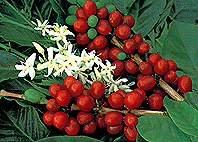Paper coffee filters can be used for more than just filtering coffee. Here are some uses and ideas that we have come up with for coffee filters.
- Kid's crafts - with some markers, paint, and a wood clothespin, you and your children can make some neat butterflies using coffee filters. This would be great at a daycare or elementary school
- Apply shoe polish. Lint free coffee filters will leave behind no lint pieces on your shiny shoes. This one I've actually tried, it works!
- Sprout seeds. Use a damp coffee filter, place seeds inside, put inside a zip lock bag and leave until they sprout.
- Out of cotton balls? They can be used to remove fingernail polish.
- Use to clean LCD screens. Comes in handy if you have misplaced your lint free cloth that typically comes with these electronics. Hmmm...I'm gonna start keeping a few coffee filters in my laptop bag.
- Use as a disposable spoon rest while cooking. No counter mess, and no extra dish to wash.
- Put baking soda in one, close with a twist tie, and use in closets, shoes, etc. to keep down odors.
- Use them in a plate to soak up grease from foods. (Bacon, Fries, Chicken Nuggets, etc.)
- Use while sewing as a backing for appliques, etc. It is easy to tear away when you are done. Need to tell my mother about this one! It'd come in handy with her quilting.
- Cover dishes when microwaving food, no splatter to clean up!
Source for paper coffee filters and other coffee accessories: http://www.coffeemaker-outlet.com/Coffee-Maker-Accessories.htm





